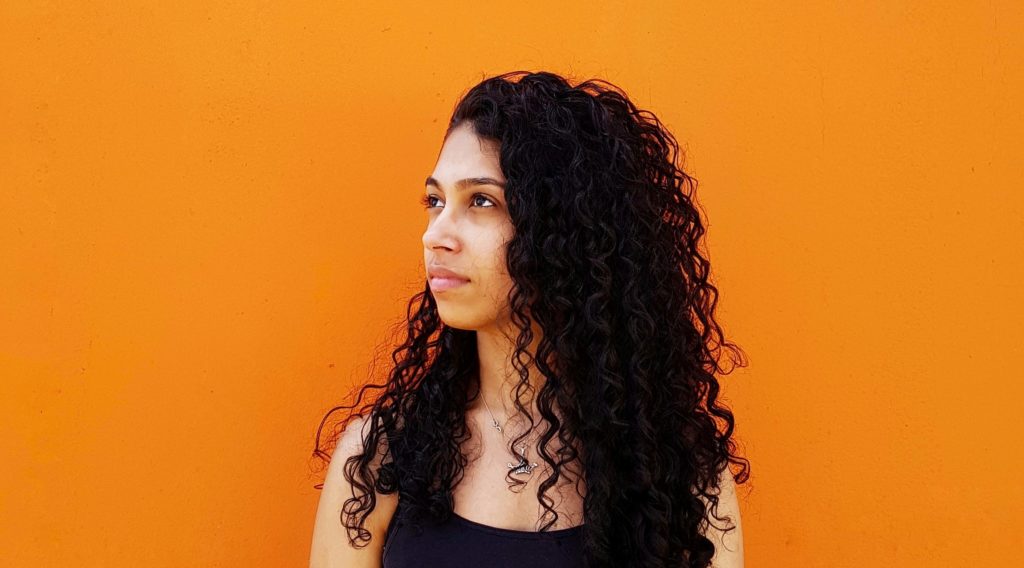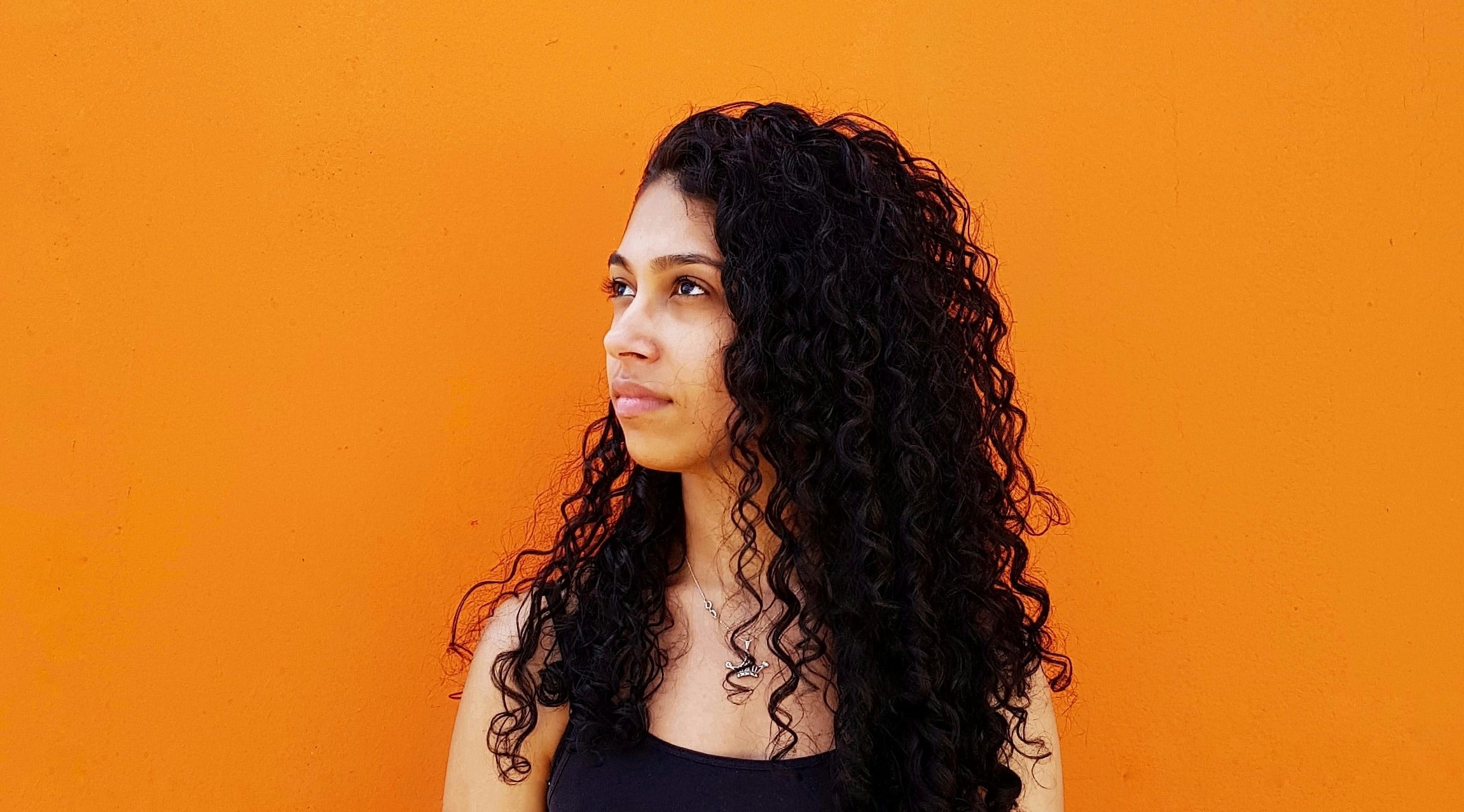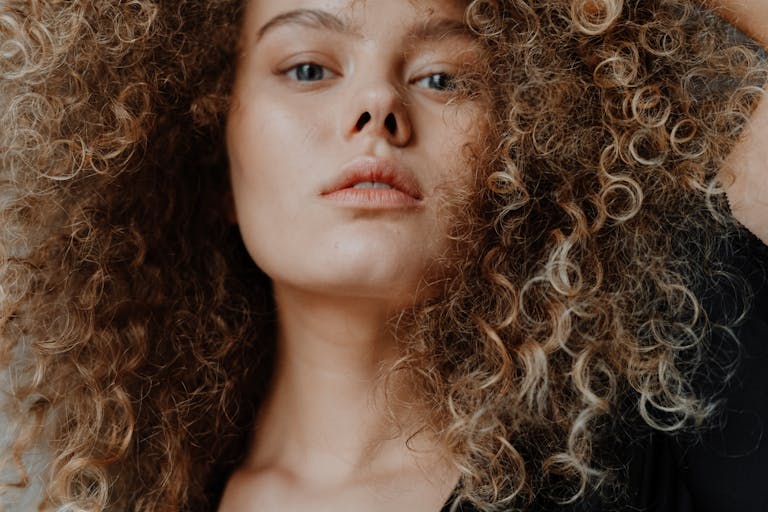Curly Hair Frizz Control | The Curly Girl Method

If you have curly hair, you’ve likely been battling frizz your whole life.
And if you follow the Curly Girl Method, you probably know that there are two main causes of frizz: lack of moisture and friction.
With that in mind, here are nine ways to hydrate your hair, lock in moisture, and minimize friction to keep frizz at bay.
Side note: This page does contain affiliate links, which means if you purchase something using the product links on this page, I may get a small commission. This comes at no extra cost to you and helps keep this site running. Thank you!
Use a fair amount of conditioner (and leave some in)
If you’re having an issue with frizz, the first step is to use A LOT of daily conditioner in the shower. Start with a palmful. If you find your hair is still frizzy, add more.
If you’re newer to the Curly Girl Method, you will likely need more conditioner than you’d expect in the beginning. You should be able to decrease this as time goes on.
It also may help to condition at the beginning of your shower and leave it in until the end.
Then when you rinse out, you can either leave some conditioner in your hair to add some extra moisture or add a little more after you rinse to act as a leave-in conditioner.
Use products
If you find that your hair needs so much conditioner that it takes your hair forever to dry, you may want to try a hydrating hair product instead.
Creams like Not Your Mother’s Curl Talk Defining Cream, Shea Moisture’s Curl Enhancing Smoothie, and Cantu’s Curl Activator can help give your hair an extra boost of moisture, which will help give you a better curl and cut down on frizz.
Use Gel (and use it right)
Gel is one product that the Curly Girl Handbook says every Curly Girl should use. Gel helps lock in moisture as your hair drys. For best results, it’s important that you use gel correctly.
This means, either smoothing or scrunching the gel in your hair, then waiting for it to dry with a gel cast.
When your hair is completely dry, break up the gel cast by tipping your head upside down/to the side, and scrunching your hair into your scalp until curls are soft.
If your hair is more prone to frizz, you might want to try a hard hold gel like Aussie Instant Freeze or Tresemme’s Mega Hold.
If your hair is moderately prone to frizz, you might be good with a medium hold like Herbal Essences Totally Twisted or a medium/hard hold like Biotera’s Styling Defining Gel.
Deep condition regularly
Some hair types need an extra punch of hydration. That’s where deep conditioning comes in.
If you find that you increase your daily conditioner, try using a product, use gel correctly, and you still have more frizz than you’d like, that may be a sign to give deep conditioning a shot.
Deep conditioners are specifically formulated to add increased moisture to your hair.
Typically, they’re also designed to be left on your hair for an extended period of time (anywhere from 15 to 30 minutes) but there are some that have been developed to do the job in as little as a minute.
If you’re looking for some deep conditioners to try, check out Shea Moisture, Pacifica Pineapple Hydrate, Mielle Babassu Oil and Mint, or Garnier’s Smoothing Treat One Minute Hair Mask.
And for more on deep conditioning, check out this post!

Wash your hair less often
One reason the Curly Girl Method does so much for curly hair and frizz is because it encourages curly girls to wash their scalp less. This allows the naturally occurring moisturizing oils to work their wait down the hair shaft.
These oils keep hair moisturized naturally, which goes a long way in reducing frizz.
End you shower with a cold water blast
One reason avoiding heat is such a big part of the Curly Girl Method isn’t just that it fries/damages hair. It also encourages the hair cuticle to open.
This is a good thing when you’re in the shower. If you shower with warm water, the hair cuticle can open to collect the moisture (in the form of conditioner and water) that you’re giving it.
But leaving the cuticle open can mean your hair won’t hold on to the moisture as well, which will lead to frizz.
One thing that will help your hair cuticle close is to give your hair a blast of cold water before you get out of the shower.
Sleep on a satin pillowcase
So far, we’ve covered tips that help you keep your hair moisturized, but we haven’t talked too much about how to minimize friction. Sleeping on a satin pillowcase will help with both.
First, satin doesn’t absorb as much moisture as your traditional cotton pillowcase. This means less moisture gets pulled out of your hair during the night, leading to less frizz.
Additionally, because satin is a smoother surface than cotton, your hair has less friction and resistance as it slides across your pillow at night, which (again) means your hair will be less frizzy.
For more on how to sleep with curly hair, check out this post.
Use a t-shirt to dry your hair, not a towel
This tip is another one that addresses both moisture and frizz for pretty much the same reasons as the last point.
Traditional towels take too much moisture out of curly hair and can be more abrasive (and cause more friction) than a softer, less absorbing t-shirt material.
This tip is great because it’s pretty easy to implement. You can literally use any old t-shirt you have lying around. Alternatively, if you’re a die-hard towel person, you could also use a microfiber towel.
Handle your hair as little as possible (especially while it dries)
One of the biggest was to help reduce friction and frizz is to handle your hair as little as possible, especially while it’s drying.
The more you touch and move your hair, the more friction you create, which allows moisture escapes.
And if you play around with your hair while it’s drying, you’re more likely to break up the gel cast prematurely, which means that moisture from your shower won’t have a chance to lock in.
Personally, this is a struggle for me, but I do totally notice a difference when I’m able to keep my hands off.

Looking for more guidance on your curly hair journey?
For beginners
If you’re new to curly hair care and looking for some help, you should check out the No-Stress Guide to Curly Hair Care!
After spending two years learning and caring for my curly hair, I wanted to create my own, in-depth guide to help fellow curlies create incredible curls in the easiest way possible.
It took me a while, but I eventually found an approach that helped me create a curly hair routine that fits into my life in the simplest way possible. And now I want to help you do the same!

For more intermediate/advanced guidance
If you’ve been on your curly hair journey for a while but still have some struggles, check out Curly Hair Problems!
After spending hours scouring the internet looking for solutions to my own curly hair problems, I found myself wishing for an easier, more comprehensive guide to the most common problems.
So that’s what I created!
Curly Hair Problems offers you 78 total solutions to the five most common curly hair care problems, including frizz, curl clumps, limp curls, product issues, and scalp issues.

Sound off: Have you noticed any tips or tricks that help reduce frizz? What’s your biggest frizz struggle? Tell us about it in the comments! And be sure to tell us a little about your hair type.







Hi! Where I can find these products in Italy?
Unfortunately, I’ve never been to Italy, so I can’t be too much help in this area. Perhaps there’s an Italy based blogger who could be more help? Best of luck with your curls!
Praying hands to distribute product, THEN scrunch
Yes, that’s true too! That’s absolutely how I apply my products and frizz reduction is part of why. 🙂 Thanks so much for point this out!